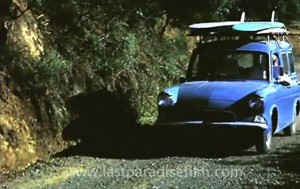 Raglan surfers developed the art and science of wave prediction.
Raglan surfers developed the art and science of wave prediction.
In the 1970s Waikato surfers had to risk a costly drive from Hamilton to Raglan just to see if there were good waves.
These days, surfers can go online to read surf predictions anywhere in the world, but in the 1970s swell prediction science had not been developed. The only way to check the surf condition was to head to the beach.
In 1973 a global petrol crisis caused petrol shortages and price hikes around the world. In New Zealand, the government introduced a “carless day” system to ration petrol. Drivers were only allowed to use their car six days a week, so Waikato surfers were frustrated when they wasted a day driving out to Raglan only to find no waves.
It was these needs of Raglan surfers which led the way in developing the art and science of wave prediction. Research into solar and ocean waves by Professor Bruce Liley at the University of Waikato inspired his surfing students. One of these students, Clive Neeson, was the first to take the new theory of ocean waves and develop the world-first technology that allowed swell and surf to be predicted.
And it’s that technology that’s still used today to let surfers know when the surf’s up.
This clip from 2011 film “Last Paradise” looks at the science behind the surf prediction technology.
